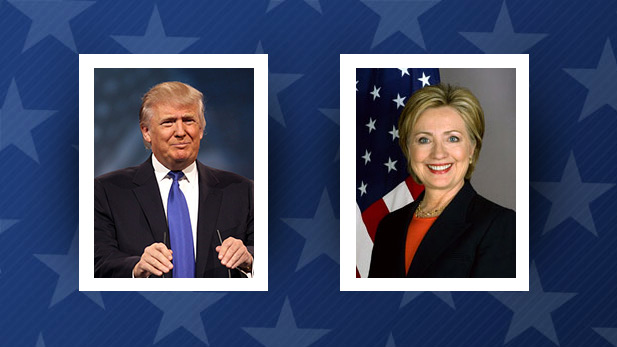 Republican Donald Trump and Democrat Hillary Clinton
Republican Donald Trump and Democrat Hillary Clinton Donald Trump and Hillary Clinton have likability problems.
An average of national polls from Real Clear Politics shows relatively high unfavorability ratings. Trump was found to be 58 percent and Clinton 55 percent unfavorable, respectively.
The fact that those numbers are close and that the overall race is tightening may mean the top of the ticket will have little effect on down-ballot races.
“If you had a more popular Democrat going against Trump or a more popular Republican going against Hillary then I think you would see some movement down ballot,” said Republican strategist Barrett Marson.
“Because they are both almost equally unliked, I don’t think that it will impact races for the Senate, races for the House,” said Marson.
When the top of the ticket wins, often candidates in other races from the same party are swept into office in what is known as the coattail effect.
But those coattails only really help when the margin of victory is a large one.
“The bigger the candidate’s lead, the more they are going to help down-ballot candidates. You might say something like, for every percent of the vote they gain, the down-ballot candidates might pick up 40 percent of that,” said Robert Erikson, a political scientist at Columbia University.
Voters do not always reward candidates from the same party as those who seem to be winning.
Erikson said the electorate sometimes makes conscious choices to vote for the opposite party in the congressional races as a check on presidential power, a phenomenon he called a “balancing” vote.
That balance does sometimes backfire, according to Erikson. He cited the 1948 presidential race as the classic example.
In that race, Republican Thomas Dewey was expected to beat Democrat Harry Truman, and voters went Democratic in congressional races.
Truman pulled out a surprise victory and got a Congress dominated by his own party.
Turnout also is factor in down-ballot races.
Excitement about a presidential candidate sends voters to the polls, and the margin of the win is crucial for other races.
“If Trump doesn’t give them a reason to pull the trigger for them they may just stay home and not turn in a ballot,” said Democratic strategist Andy Barr.
Unexcited voters could also simply skip the presidential race on the ballot while casting votes for other races, a maneuver known as an under vote.
Some expect that could happen in this year’s general election.
Voter behavior patterns will be revealed in just six weeks when ballots are counted.

By submitting your comments, you hereby give AZPM the right to post your comments and potentially use them in any other form of media operated by this institution.